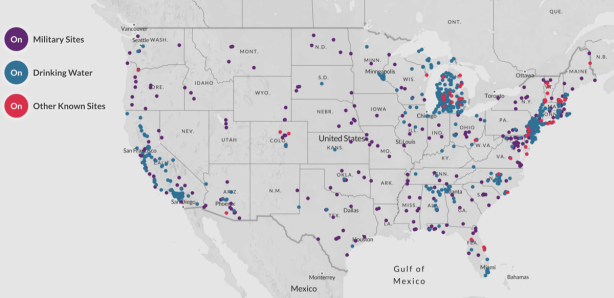[Audio] PFAS chemicals, and you
By Ira Flatow | Science Friday | November 1, 2019

Read the full article by Science Friday
Conversation with Robert Bilott and Sharon Lerner
“Eighteen years ago, a lawyer named Robert Bilott sent a letter to the EPA, the attorney general, and other regulators, warning them about a chemical called PFOA, short for perfluorooctanoic acid.
Outside of the companies that made and used PFOA, most people had never heard of it. But E.I. du Pont de Nemours and Company, better known as DuPont, had been using PFOA to make Teflon since the early 1950s. In the course of a lawsuit against the chemical corporation, Bilott had uncovered a trove of internal company documents, showing DuPont had been quietly monitoring the chemical’s health risks for decades, studying laboratory animals and their own workers. Bilott called on regulators to investigate and take action.
PFOA has since been linked to testicular and kidney cancer, among other diseases. It is part of a larger class of perfluoroalkyl and polyfluoroalkyl substances (PFAS), which have now been detected in everything from polar bears in Svalbard to fish in South Carolina, and are estimated to be in the blood of over 98% of Americans.
In the mid-2000s manufacturers started voluntarily phasing out PFOA and a related chemical, PFOS, but they substituted them with other PFAS chemicals, whose possible health effects are still being investigated and litigated.
Nearly two decades after Bilott wrote the EPA, the agency has not regulated these chemicals, but it says it plans to begin the process by the end of this year. Bilott, who previously secured a $670 million settlement from DuPont, is now suing DuPont, Chemours, and others on behalf of everyone in the United States who has PFAS in their blood.
This week, Robert Bilott tells Ira his story, now featured in his book, Exposure, and the movie, Dark Waters, out in theaters November 22. You can read an excerpt of Bilott’s book here.
Sharon Lerner of The Intercept also joins to discuss what is known about these chemicals, and what is and isn’t being done to limit our exposure…”
This content provided by the PFAS Project.
Location:
Topics: